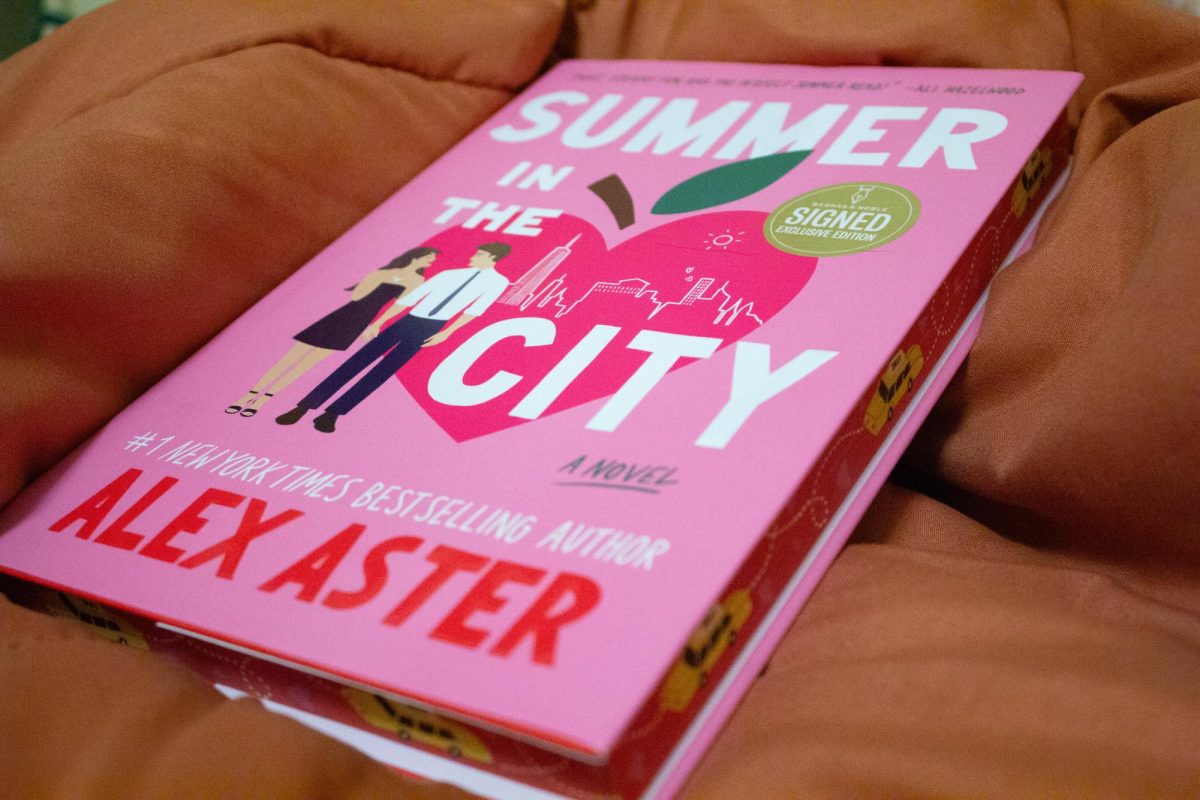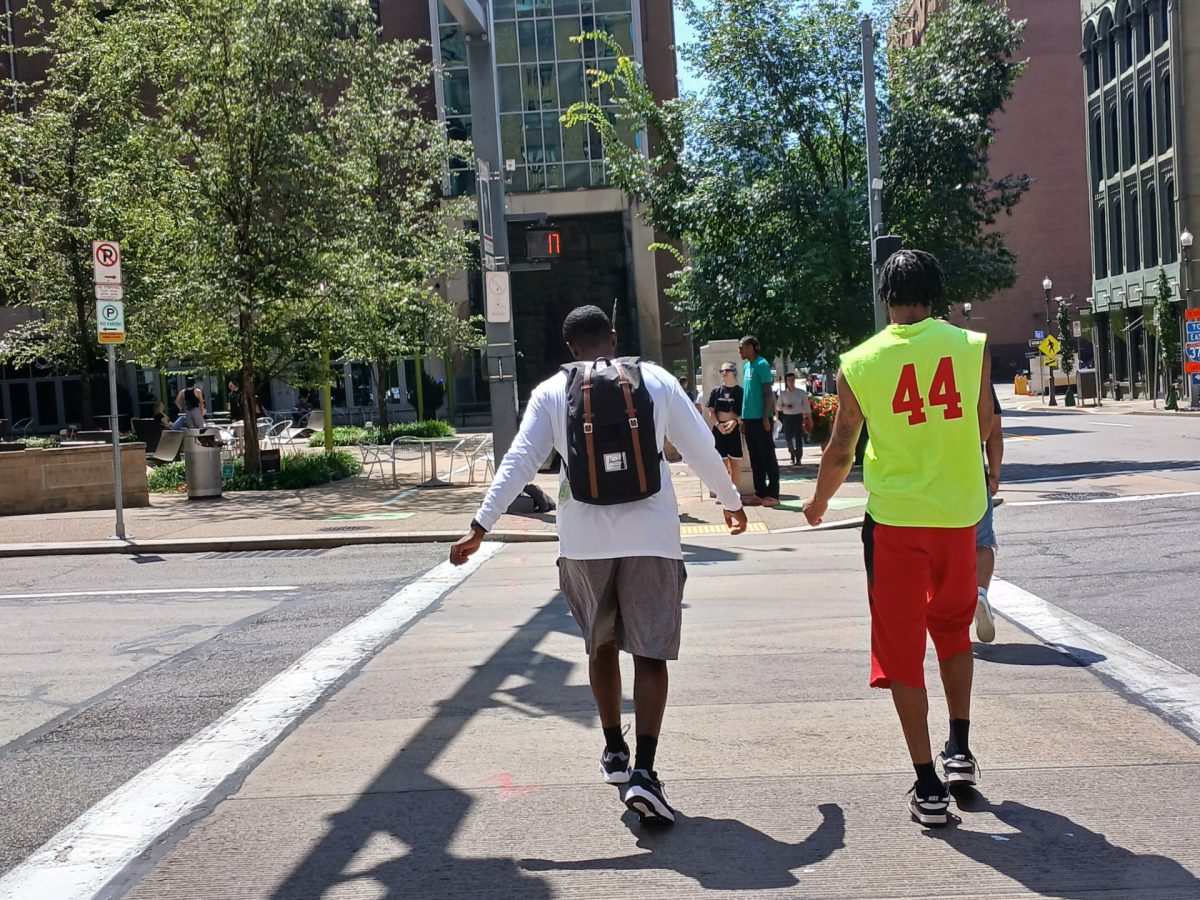Back in 2021, I had the pleasure of reviewing a new album by my all-time favorite band, Duran Duran. “Future Past” was their first release in six years; as such, I figured it would be my only opportunity to review new material from them during my time in college. That being said, two years later, I did not expect to find myself with the privilege of reviewing their next studio album, “Danse Macabre,” which was released on October 27.
Setting itself apart from the jump, this entry serves as the band’s first concept album, infused from start to finish with a distinctively eerie, gothic tone accompanied by Halloween theming. The thirteen tracks can best be divided into three distinct sections: new material, which accounts for three songs; reimaginings of old material, which accounts for four; and then covers, which fill in the remaining six tracks.
While the new material is fantastic and the reimaginings are captivating, it pains me horribly to say that the majority of covers struck me as more or less as just passable, without much else beyond that.
“Danse Macabre” and “Black Moonlight,” two of the three new entries, were the first singles to be released for the album. The title track has been in my music rotation since its release. Its a mix of industrial-esque plinks and drones reminiscent of early Depeche Mode, syncopated claps and thumps keeping perfect time, and mysteriously dreamy synths that blend into a medley that’s consummate by both Halloween music standards and regular compositional standards. Super fans of the group might also find it notable for its guitar, courtesy of former member Warren Cuccurullo, who hasn’t collaborated with the band in over a decade.
“Black Moonlight” also sees the return of familiar faces: the group’s original guitarist Andy Taylor, back for the first time since 2004, and long-time collaborator Nile Rodgers, co-founder of Chic and producer extraordinaire who shaped some of the band’s most successful releases. This song is pure lightning in a bottle. It’s Duran Duran at their very best. The backing dazzles with the expert layering of a killer funky bassline, punchy guitar chords, mystical synths and tight drum beats, while lead singer Simon Le Bon’s stunning vocals flawlessly tie everything together. It’s a choice example of their ability to experiment and innovate while staying true to their sound and its facets.
“Confession in the Afterlife” concludes the album with a slower, simpler composition, consistent with how Duran usually ends their albums. The backing is much more sparse than the rest of the new songs, devoting most of the focus to Le Bon’s vocals. It picks up more in the chorus, with a somber guitar riff and warm drums. This melodic tune falls in line with the majority of their album closers, acting as a satisfying cool-down from the preceding tracks.
The majority of source material for the remixes hail from earlier Duran albums. The songs that were chosen are lesser known, and, as a fan, I appreciate seeing deeper cuts get some love. Each remix manages to bring something new to the composition while still infusing whispers of the original song, particularly in the backing. On “Secret Oktober 31st,” the replacement of the heavy, more polka-esque synth with a lighter, twinkling one offers a brilliant contrast while still feeling reminiscent of its predecessor, “Secret Oktober.” The tempo change does the same; instead of a more or less steady, unchanging backing, the update offers more variety while still staying in the ballpark of the original sound.
“Love Voudou” sees a faster, more R&B infused update to its predecessor, “Love Voodoo.” The bass and drums shine just as bright as they do on the original but in a completely new way, which I think is an extraordinary achievement. It manages to offer a vastly different sound that doesn’t encroach on the original while also paying homage to it, the same of which can be said about “Secret Oktober 31st.” If this album’s new songs exhibit mastery of blending old and new, the ability showcased on these two remixes nears perfection.
“Nightboat” and “Super Lonely Freak” (the beginning of it anyways) are still great, I just don’t think they quite distinguish themselves enough from their predecessors to give them quite as much praise. “Nightboat” offers an eerier, more sweeping backing than the original, but I wouldn’t say it stands as well on its own compared to the other two remixes. The vocals, while still excellent, are also less varied and interesting than they are in the original. They’re kind of just straightforward, stripping away a distinctive part of the original without replacing it with something else of note. “Super Lonely Freak” starts as a remix of the group’s song “Lonely in Your Nightmare” before becoming a cover of Rick James’ “Super Freak.” Apart from the cover shift, the remix feels like it doesn’t really add to or change anything from the original; again, it’s too straightforward compared to the others. As for the end, I absolutely despise “Super Freak,” I think it’s a terrible song, and this entire composition gets docked even further for including it.
That leads us into the covers. It’s not that they’re bad per se, they either just don’t really bring anything new to the original song, or the genre doesn’t really mesh with Duran’s. The worst offenders in that regard are Billie Eilish’s “Bury a Friend” and Rolling Stones’ “Paint it Black.”
I was happy to see Duran paying homage to a newer artist like Billie Eilish. I think it shows their commitment to staying up on what’s current and trendy, but this song just doesn’t work for them. Her sound is just so distinctive and different from their own that their attempt to put a spin on it comes out really odd. As for “Paint it Black,” it just feels too far from the original for me; it’s a lot slower and the vocals are purposely off tempo, neither of which I feel enhanced it. It leans a little too much into Duran’s style, whereas I would have preferred to see a marriage between that and the more classic rock elements of the original song.
Personally, I think the choices closer to their own genre tend to work better, such as Siouxsie Sioux’s “Spellbound” or Talking Heads’ “Psycho Killer.” They feel like more of a seamless blend between old and new, as opposed to the songs aforementioned that were altered too heavily from the originals. That being said, I don’t think they quite manage the same balancing act that the remixes of their own material do, which is to say upholding the original while producing an equally notable successor. However, I think there is an admirable sense of fun and passion that exudes from each cover, regardless of its success. You can tell they enjoyed working with the material and paying homage to the chosen collection of artists.
Overall, I think the positives far outweigh any negatives on “Danse Macabre.” The remixes and new material set the bar so high that the covers just can’t keep up. Not because they’re bad per se, they’re just not as successful as the latter. I think they work better if you kind of just think of them as “fun” more so than in an analytical sense, as I did for the purposes of this review. If you’re looking for a good album to play at your Halloween get-together, or just good new music in general, it’s absolutely worth taking a look at. It’s far better than most other options in both categories.









